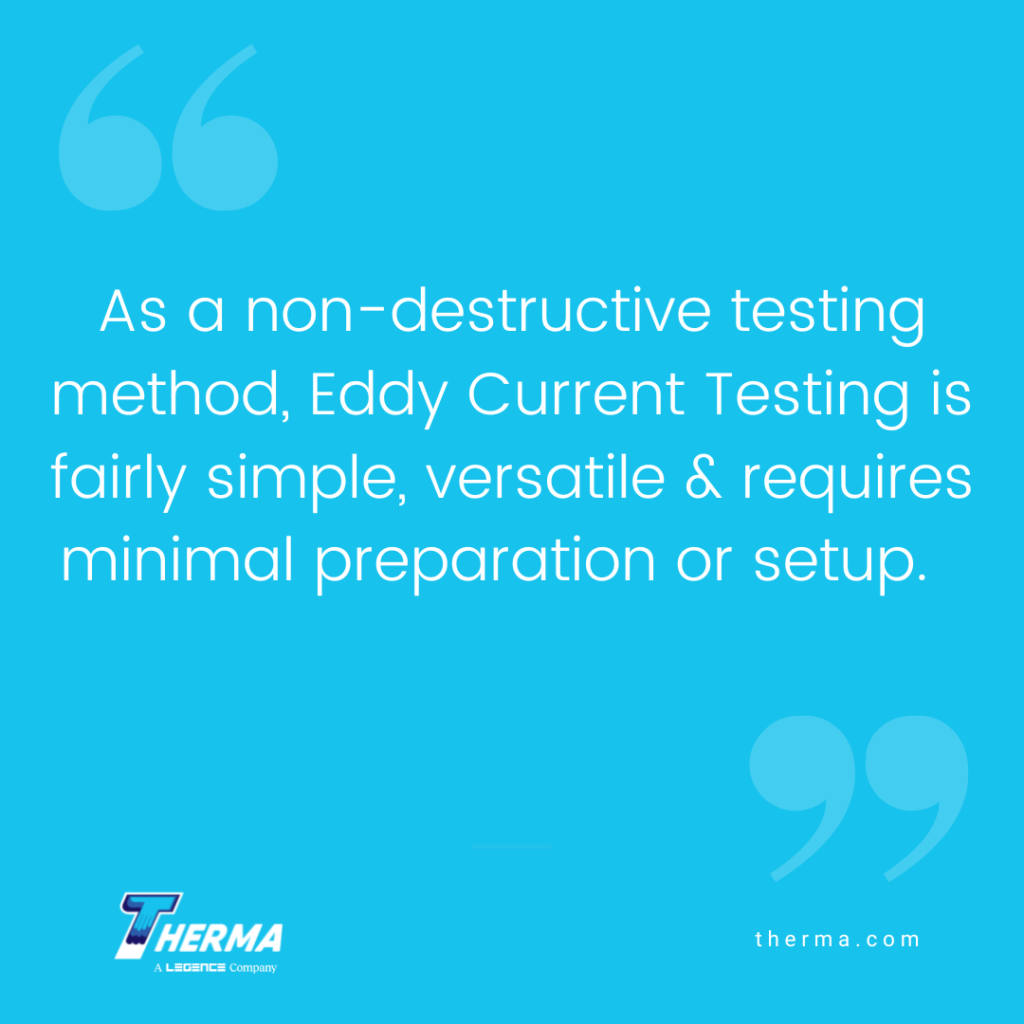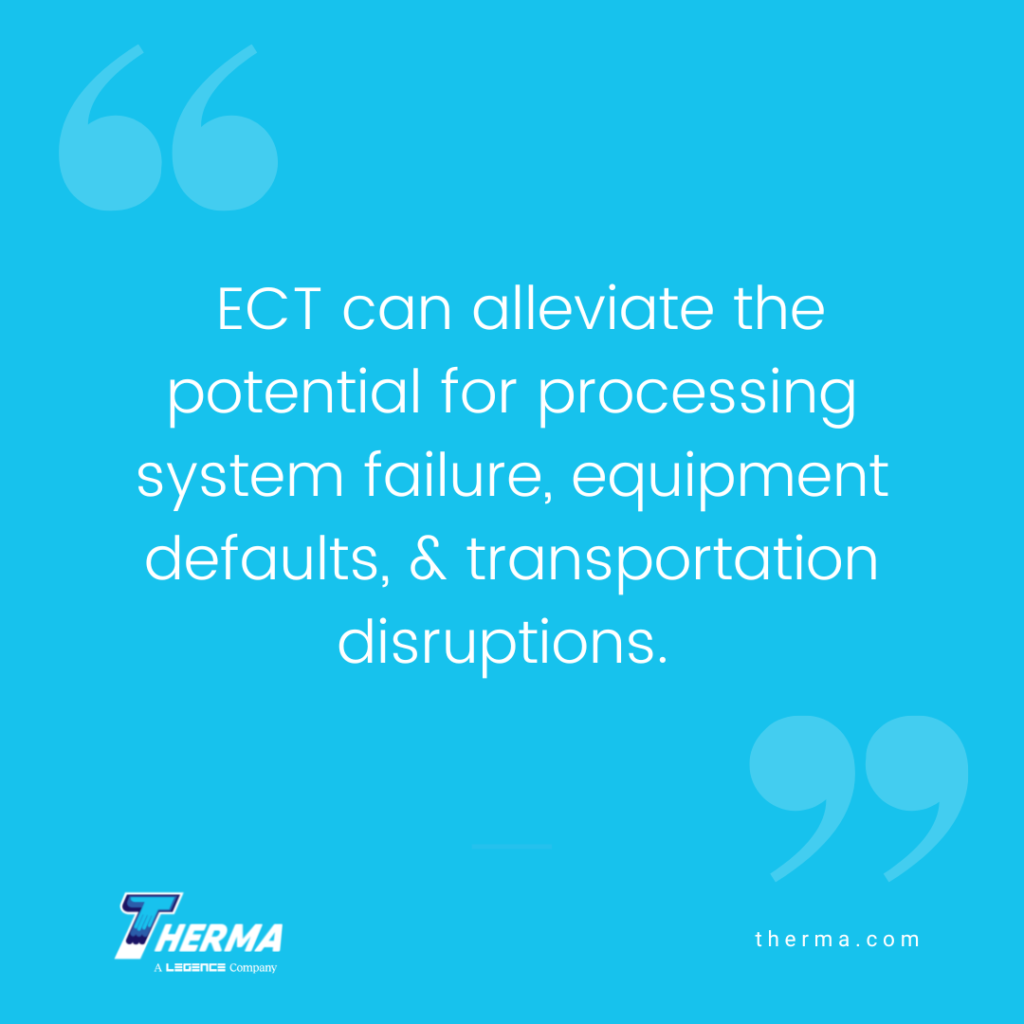by Ali Kriscenski
Material integrity is essential to structural and mechanical processes. Eddy current testing (ECT) is a valuable inspection method that can help identify flaws, tolerances, thickness and compositions of materials and coatings.
What Is Eddy Current Testing?
The Eddy current testing (ECT) method was discovered nearly 200 years ago, when experiments with electromagnetic induction led to an understanding of how to utilize eddy currents to determine the qualities and purity values of conductive materials. Eddy currents are loops of electrical current created by an AC electromagnet or transformer. The currents flow in closed loops perpendicular to a magnetic field and vary in magnitude relative to the composition of the conductive material. Eddy current testing captures the changes in the electrical current loops as readable data.
How Does Eddy Current Testing Work?
The Eddy current testing method is one of several non-destructive or non-invasive test methods, which also include radiographic imaging, ultrasonic testing and magnetic testing. With ECT, a test probe with an alternating current produces a magnetic field. The alternating magnetic field creates eddy currents – or eddies – in conductive materials. Any variations in the material will affect the eddy current flow and convey data that can be analyzed by the technician. Disruptions to the magnetic field can indicate a variety of deviances, such as cracks or compromised material.
 ECT Use Cases
ECT Use Cases
The ability to identify defects in materials makes ECT a valuable tool for inspecting steel, copper and aluminum industrial piping. It can also be used to measure material or coating thickness, detect damage, identify material composition and determine heat and other tolerances.
These qualities make ECT essential to manufacturing processes, power generation equipment and other critical equipment such as aircraft, train, shipping and trucking components. The inspections that ECT facilitates can detect defects ahead of failure, allowing interventions that prevent operational shutdowns, costly repairs and serious or fatal accidents.
Advantages of ECT
As a non-destructive testing (NDT) method, ECT is fairly simple, versatile and requires minimal preparation or setup. The portable devices and variety of probe options can be used to inspect even complex forms and provide immediate feedback on material integrity. ECT offers a measure to detect small or hidden defects that are otherwise invisible.
Factors that Affect ECT Inspections
The conductivity of the test sample has a significant effect on the eddy current, and where materials have been affected by heat can impact test readings. How ferrous a material is also determines the accuracy of an ECT inspection. Eddy current depth varies greatly between ferrous and non-ferrous material, making ferrous material less suitable for subsurface inspections. Another important factor in ECT inspections is that the quality of testing is highly dependent on the technician’s experience and knowledge.
ECT and Quality Control
Eddy current testing can be used to meet standards set by quality and safety organizations, such as American Society for Testing and Materials (ASTM) or International Organization for Standardization (ISO). Additionally, the testing itself is held to quality standards that determine the parameters for calibration and other settings.
 How ECT Can Serve Your Business
How ECT Can Serve Your Business
While testing and standards may seem like small factors in business operations, they can have tremendous impact on facility operations, safety, maintenance and overall costs and revenue. As part of preventative maintenance, ECT can alleviate the potential for processing system failure, equipment defaults, transportation disruptions and act as a preventative measure for safety finding material defects, such as cracks or corrosion. As a maintenance investment, eddy current testing can have tremendous returns in cost savings and business continuity.
Contact the experts at Therma to learn more.
Ali Kriscenski was trained in high-performance building design at Boston Architectural College. She has worked with leading architecture and construction firms in NYC and New England and served on the executive team at the Forest Stewardship Council International. She was the managing editor at Inhabitat and has worked pro bono for the Green Building Institute, ISEAL Alliance and Habitat for Humanity.
Sources
The American Society of Nondestructive Testing – Introduction to Nondestructive Testing
American Society for Testing and Materials (ASTM) – Standard Guide for Eddy Current Testing of Electrically Conducting Materials Using Conformable Sensor Arrays
International Organization for Standardization (ISO) – Non-destructive testing — Eddy current testing — Vocabulary
Engineering 360 – Eddy Current Standards
Iowa State University Center for Non-Destructive Evaluation – Eddy current testing
ScienceDirect – Eddy current testing
ScienceDirect – Ultrasonic Testing







